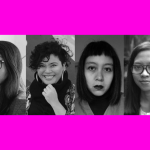Since 1952, awards on literature have become a prestigious tradition in Indonesia. Several parties have taken turns to appreciate the prominent works in varied categories , ranging from National Consultative Agency on Culture (BMKN), Horison Magazine, Rancage, Language Development and Fostering Agency, Kusala Sastra Khatulistiwa, and Jakarta Arts Council.
However, with a large number of literary awards going on for decades, how many times have women’s names come up?
Data compiled by researchers of The Indonesian Arts Coalition (Koalisi Seni) shows a serious gender gap in literary awards. For instance, the 2019 Jakarta Arts Council Literature Competition chose nine winners in the novel category, but only three of them were women. The 2020 Kusala Sastra Khatulistiwa Award announced ten nominees for the poetry category, only three women among them. The same goes to the 2020 Language Development and Fostering Agency, which announced all-male nominees in five Literature Award Categories.
Aside from nominees and awardees, gender inequality is also seen in the jury composition. In the 2020 Tempo Literary Awards, for example, all three of the judges were men. This situation has become a spotlight for critics.
Our talks in September 2021 with three literary activists and members of Koalisi Seni revealed that a gender barrier must be opened to understand the gap in literary recognition. Women writers have less opportunity to be appreciated for their works because of this barrier.
Eliza Vitri Handayani, author of the novel “From Now on Everything Will Be Different”, argued that there are many causes of inequality in literary awards. “One of them is gender biases in assessment standards. These biases are applied not only to the judges, but also to the way the public appreciates a literary work. Other problems also lie in the writing process, publishers, and the management committee,” she said.
Publishers have the upper hand when the awards require application to be made by them. This means that the selection process has already begun from the internal teams of publishing. If the publisher does not hold gender awareness, they will become the first and foremost party in hindering female writers to take part in the awards.
The committee behind the awards plays a vital role. Several literary awards rule the committee to filter the works before they are placed on the jury’s table. If the committee has a bias in assessing female writers’ works, they will become the second layer in closing the opportunity for female writers to receive awards. Furthermore, the committee has the authority to choose the judges who will take part in each stage of the selection.
Moreover, a set of rules for the jury also come from the committee. When the regulation does not align with gender perspective, the works of women writers would be easily marginalized.
Gender gap is also reflected in the writing process. Women’s difficulties in accessing education due to patriarchal culture affect their ability to pursue works that meet mainstream standards. Burdened with domestic tasks, women often have less time to write. In fact, the writing process takes time, so it is not just a side job that can be taken lightly.
Even if the work has been made, other obstacles arise from the gender-insensitive editors in mainstream publishing companies. As a result, the authors will prefer to work with small-scale publishers who are more progressive and communicative, but with limited markets.
Eliza also reveals her disappointment. When she was trying to find a mentor in the literary scene, she got sexist responses from some male writers, such as “We have a new woman here, who wants to teach her?” or “Yes, sugar. So where are we going to meet later?” This shows that women objectification is considered normal among writers.
For Dewi Noviami, founder of female writers community Ruang Perempuan dan Tulisan (RPdT), the question “Do women writers’ works have a chance to win an award?” reminded her of the early formation of her community. She said that the search for women writers is quite challenging due to the lack of data and archives of their works.
The award event could have been an easy route to address the problem. By collecting the works which passed the selection process, the works of women writers can be accessed by the public for research purposes.
Dewi said a broad and deep perspective was needed to understand gender issues in literary awards. She argues, “When a man without gender awareness becomes the manager of the award, he will feel, ‘We will choose the best literary works no matter what’.”
“The situation will be different when a woman or people with gender awareness manages the awards. They will see literature as a tip of the iceberg. The writing that appears on the surface is only a piece of a whole work system which most people don’t have a clue about. The situation that needs to be re-examined, many fundamental issues must be reviewed,” she added.
In many cases, she said, the jury already has proper understanding on gender issues. But, how it is used in the selection process is another problem. The jury must be aware that they have the authority to question the committee or to refuse the assessment process if there’s no women writers’ works on the table.
Dewi also added a number of issues that need to be considered to make a gender-equal literary award. For example, serious effort must be carried out in gender mainstreaming, recognition, and understanding literary works from outside Java.
On the other hand, literature criticism is as vital as literary awards as they are complementary for each other. Literature criticism will influence the works deemed worthy of selection. On the other hand, literary awards can affect the marketing of literary works which enhance readers’ knowledge and critical abilities on literary works.
Education is also an important factor. From an early age, children should be introduced to reading and examining a literary work. The sensibility to judge a fine work of literature needs to be built. This will enhance not only their reading interest, but also their writing capacity.
“Like a lighthouse, literary awards will become prone to attack if it stands on its own,” Dewi said.
She believes literary awards can be a solution to address gender inequality if they are aligned with literature criticism and literature education. From the writer’s perspective, gender inequality can be tackled by proper access to fine writings and literary residencies, which are essentials in the writing process for women writers.
To tackle gender inequality while expanding the network, female writers could join collective action to identify support systems and work together to pursue their goals. There are many female writer communities or collectives available such as Peretas (Perempuan Lintas Batas), Blogger Perempuan Network, IIDN (Ibu-Ibu Doyan Nulis), and so on.
It’s impossible for a woman writer to deal with gender inequality by herself. By going hand in hand, women have a bigger chance to achieve gender justice.
Asmayani Kusrini, writer of the novel Siri’, added that the efforts to eradicate gender inequality must be carried out systematically. It begins with family as the smallest level, to educational institutions and the government. All groups and communities must also continue discussing it on various occasions, both in formal and non-formal events, to raise a problem and formulate solutions about gender inequality, including in literary awards.
Rini said, “The literary award is like traffic signs. It is installed along the road as a reference point, a marker of the times, and is expected to facilitate the people in the future.” So, it is no wonder that literary awards are influential among the public and writers.
For Rini, literary awards create a line of works which are considered important to read. This process affects public perception on pursuing knowledge through literary works. If the awards are still dominated by men, books by women writers will stay hidden on the back of the shelves. Thus, as more women attain the awards, more diverse representations of gender, perspectives, and aesthetic styles of women will get the spotlight. So the readers and potential writers can open their horizons and be inspired by female works. (Diva Octaviana, translated by Moyang Kasih)



